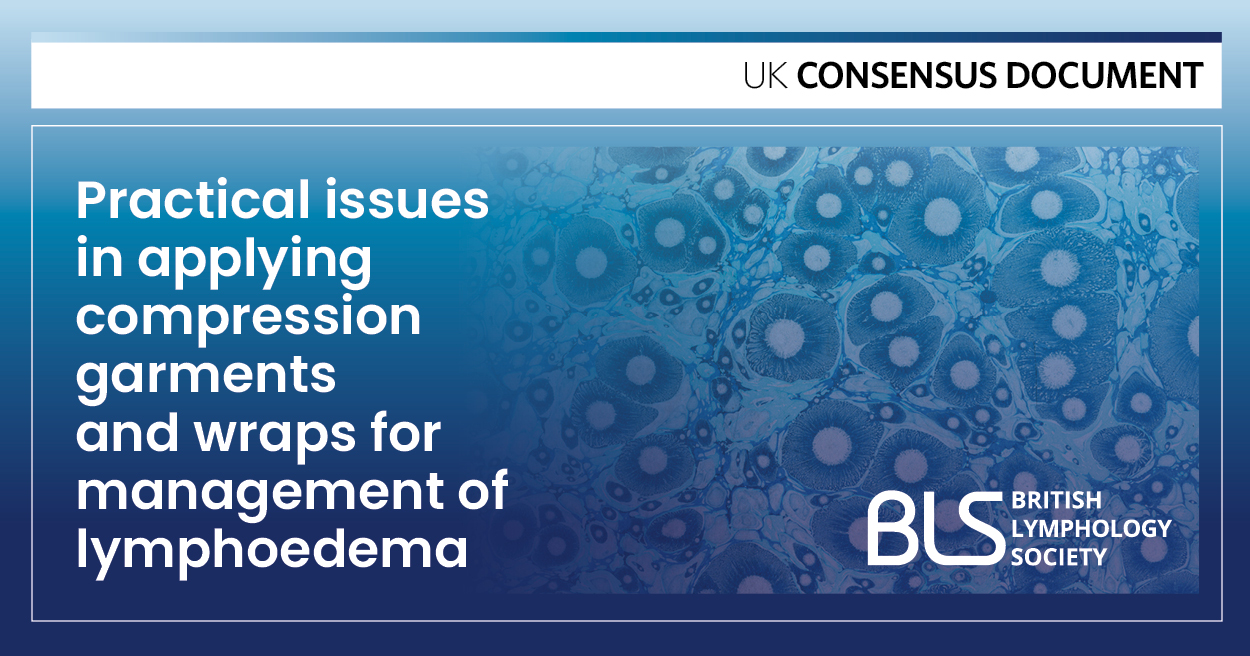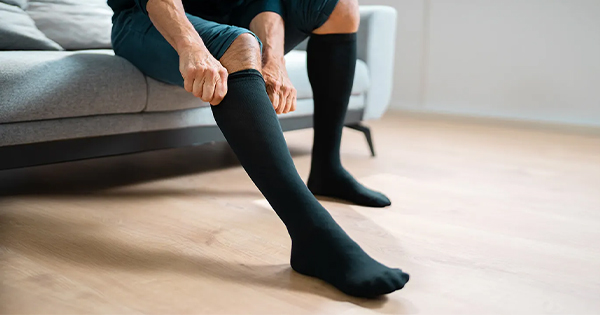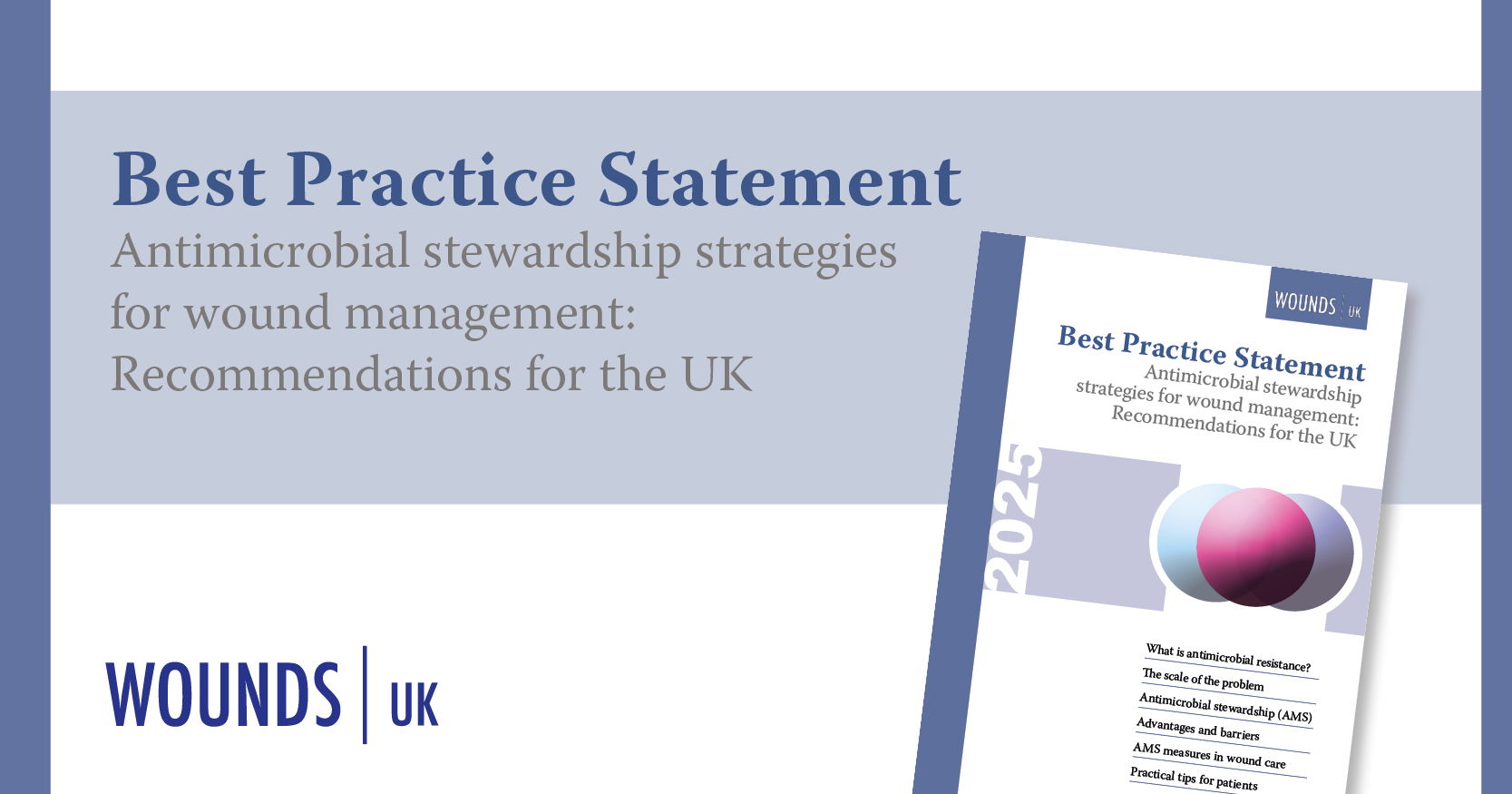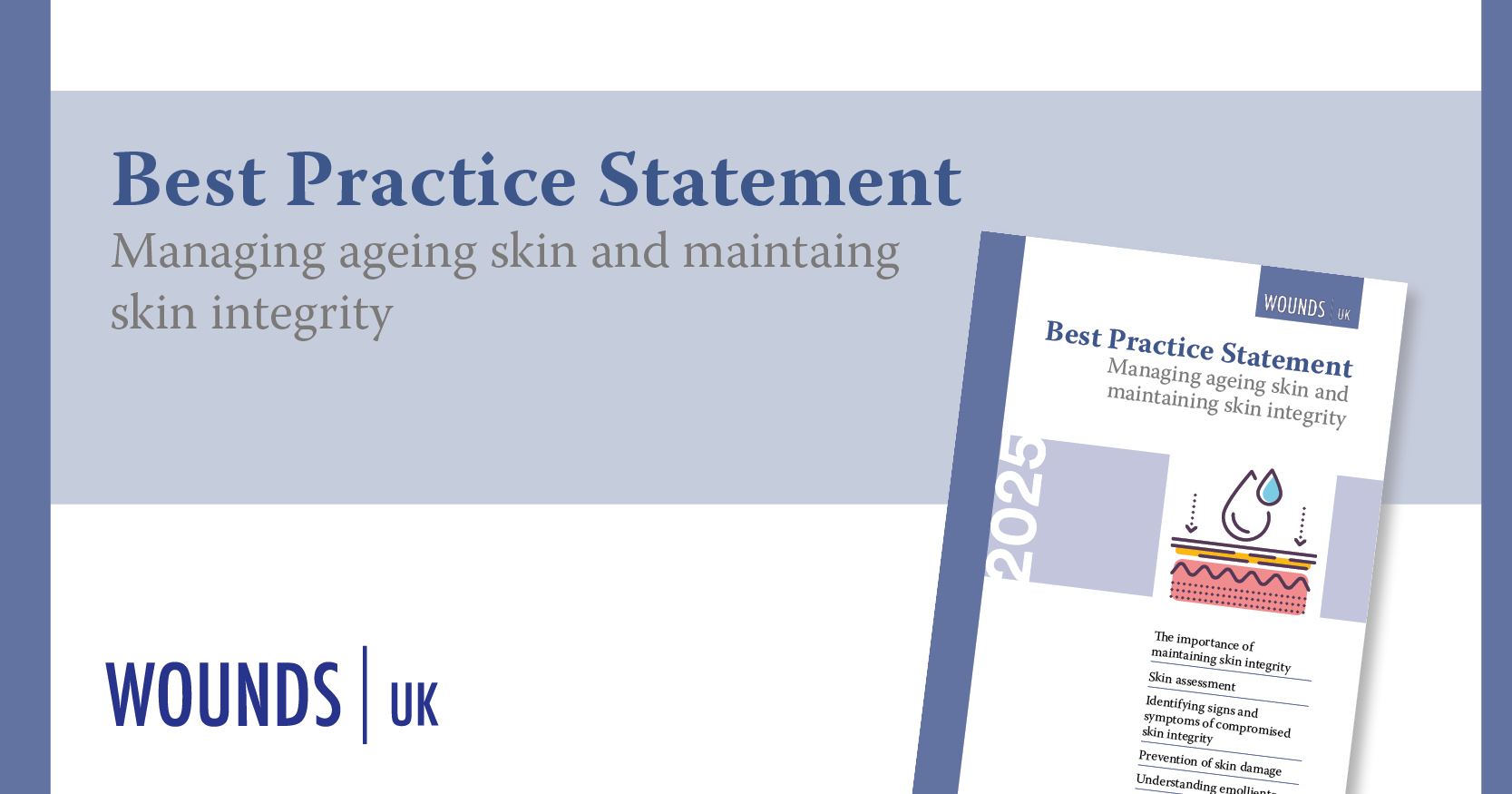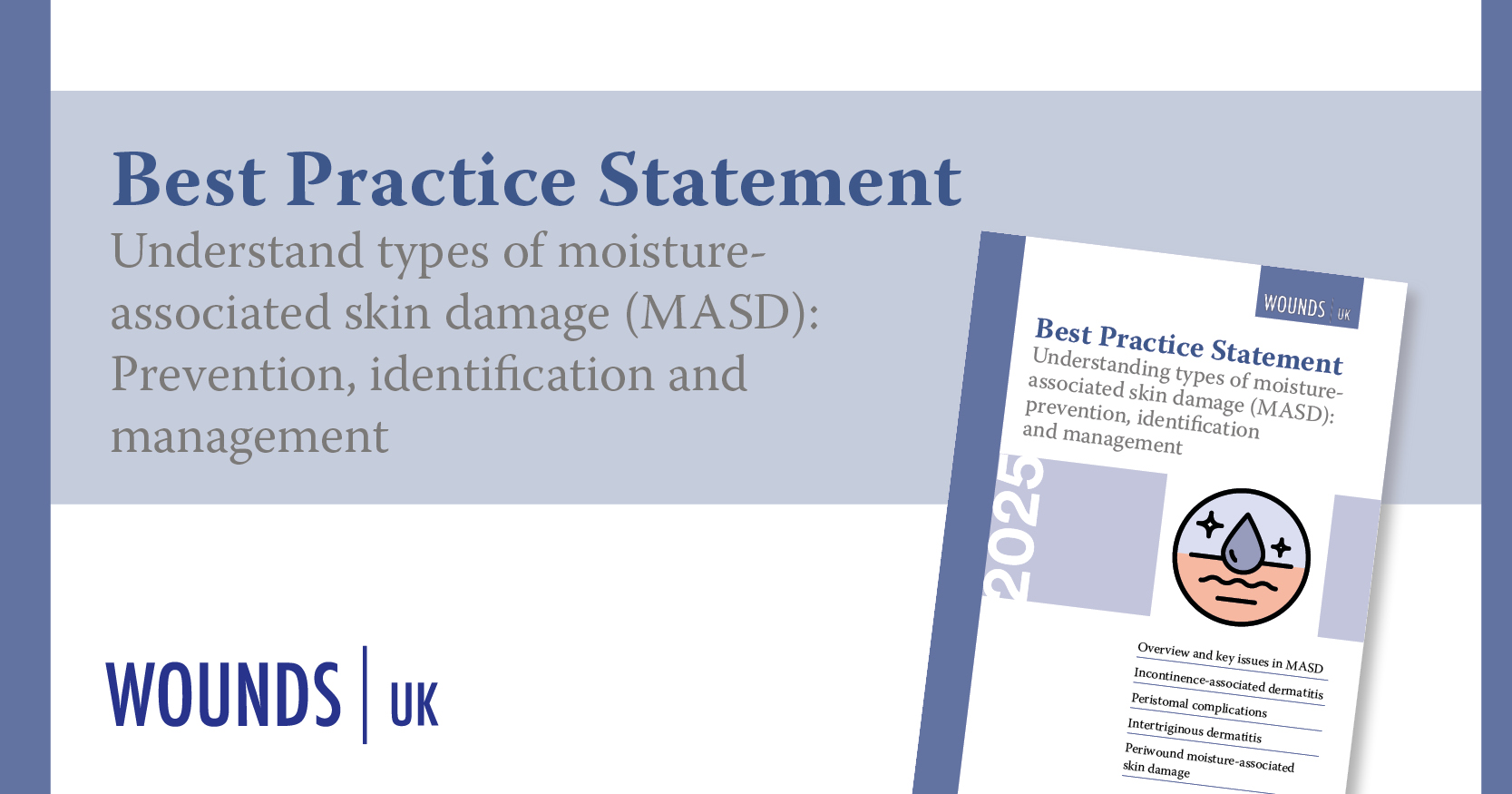ReferencesAll-Ireland Lymphoedema Guidelines (2022) Available at: https://assets.hse.ie/media/documents/ncr/lymphoedema-guidelines.pdf (accessed 11.07.2024)
Angeli V, Lim HY (2023) Biomechanical control of lymphatic vessel physiology and functions. Cell Mol Immun 20(9):1051–62
Baker ML, Cantley LG (2023) The lymphatic system in kidney disease. Kidney360 4(6):e841–50
Barnhart H, Maldonado T, Rockson SG (2024) Various therapies for lymphedema and chronic venous insufficiency, including a multimodal at-home nonpneumatic compression treatment. Adv Skin Wound Care 37(4): 212–15
Bertsch T, Erbacher G, Elwell R (2020) Lipoedema: a paradigm shift and consensus. J Wound Care 29(Sup11b): 1–51
Breslin JW, Yang Y, Scallan JP et al (2018) Lymphatic vessel network structure and physiology. Compr Physiol 9(1): 207–99
British Lymphology Society (2022a) The chronic oedema wet leg pathway. Available at: https://www.thebls.com/public/uploads/documents/document-24771674730105.pdf (accessed 16.09.2024)
British Lymphology Society (2022b) Guidelines on the Management of Cellulitis in Lymphoedema. Available at: https://www.lymphoedema.org/wp-content/uploads/2022/10/management_cellulitis.pdf (accessed 26.09.2024)
British Lymphology Society (2023) What is lymphoedema? Available at: https://www.thebls.com/public/uploads/documents/document-82771696947860.pdf (accessed 05.07.2024)
British Lymphology Society (2024) Manual Lymphatic Drainage, Position Document. Available from October 2024 at: www.thebls.com/documents-libary (in press at the time of this publication)
Brown S, Dayan JH, Kataru RP et al (2023) The vicious circle of stasis, inflammation, and fibrosis in lymphedema. Plast Reconstr Surg 151(2):
330e–31
Children’s Lymphoedema Special Interest Group (2018) Charter of Care for Children and Young People with Lymphoedema. Available at: https://www.lymphoedema.org/wp-content/uploads/2020/01/charter_of_care_for_children_and_young_people_with_lymphoedema.pdf (accessed 09.07.2024)
Chohan A, Sumner S, Olivier M et al (2022) Case study: night compression use in a patient with Milroy’s disease. Br J Nurs 31(12): S34–41
Da Cuña-Carrera I, Soto-González M, Abalo-Núñez R et al (2024) Is the absence of manual lymphatic drainage-based treatment in lymphedema after breast cancer harmful? A randomized crossover study. J Clin Med
13(2): 402
de Sire A, Losco L, Lippi L et al (2022) Surgical treatment and rehabilitation strategies for upper and lower extremity lymphedema: A comprehensive review. Medicina (Kaunas)
58(7): 954
Donahue PMC, MacKenzie A, Filipovic A et al (2023) Advances in the prevention and treatment of breast cancer-related lymphedema. Breast Cancer Res Treat 200(1): 1–14
Elstone A, O’Neill C, Ritchie G et al (2021) Best Practice Statement: Compression hosiery: A patient-centric approach (3rd edn). Wounds UK
Fletcher J, Atkin L, Brown D et al (2023) Best Practice Statement: The use of compression therapy for peripheral oedema: considerations in people with heart failure. Wounds UK
Fu MR, Ridner SH, Hu SH et al (2013) Psychosocial impact of lymphedema: a systematic review of literature from 2004 to 2011. Psychooncology 22(7): 1466–84
Global Alliance for Elimination of Lymphatic Filariasis (2024) Available at: https://www.gaelf.org/about-lf (accessed 08.07.2024)
Hill JE, Whitaker JC, Sharafi N et al (2023) The effectiveness and safety of heat/cold therapy in adults with lymphoedema: systematic review. Disabil Rehabil 46(11): 2184–95
Houck P, Dandapantula H, Hardegree E et al (2020) Why we fail at heart failure: Lymphatic insufficiency is disregarded. Cureus 12(6): e8930
International Lymphoedema Framework (2020) Compression therapy: A position document on compression bandaging. Available at: https://www.lympho.org/uploads/files/files/Compression-bandaging-final.pdf
(accessed 11.07.2024)
International Society of Lymphology (2020) The diagnosis and treatment of peripheral lymphedema: 2020 consensus document of the International Society of Lymphology. Lymphology 53(1): 3–19
Keast DH, Despatis M, Allen JO et al (2015) Chronic oedema/lymphoedema: under-recognised and under-treated. Int Wound J 12(3): 328–33
Konecne SM, Perdomo M (2004) Lymphedema in the elderly: A special needs population. Topics in Geriatric Rehabilitation 20(2): 98–113
Ly CL, Kataru RP, Mehrara BJ (2017) Inflammatory manifestations of lymphedema. Int J Mol Sci 18(1): 171
Lymphoedema Framework (2006) Best Practice for the Management of Lymphoedema. International consensus. London: MEP
Moffat C, Keeley V, Franks P et al (2016) Chronic oedema: A prevalent health care problem for UK health services. International Wound J 14(5): 772–81
Moore JE Jr, Bertram CD (2018) Lymphatic System Flows. Annu Rev Fluid Mech 50: 459–82
Mortimer PS, Rockson SG (2014) New developments in clinical aspects of lymphatic disease. J Clin Invest 124(3): 915–21
Mosti GB, Mattaliano V (2007) Simultaneous changes of leg circumference and interface pressure under different compression bandages. Eur J Vasc Endovasc Surg 33(4): 476–82
National Cancer Institute (2023) Seer Training Modules. Introduction to the lymphatic system. Available at: https://training.seer.cancer.gov/anatomy/lymphatic/ (accessed 04.07.2024)
National Health Service (2023) Treatment. Lymphoedema. Available at: https://www.nhs.uk/conditions/lymphoedema/treatment/ (accessed 24.0624)
National Institute of Health (2024) Anatomy, lymphatic system. Available at: https://www.ncbi.nlm.nih.gov/books/NBK513247/#:~:text=The%20lymphatic%20system%20includes%20numerous,extracellular%20space%20of%20various%20tissues (accessed 04.07.2024)
National Library of Medicine (2024a) Lymphoedema. Available at: https://www.ncbi.nlm.nih.gov/books/NBK537239/ (accessed 13.09.2024)
National Library of Medicine (2024b) Malabsorption syndromes. Available at: https://www.ncbi.nlm.nih.gov/books/NBK553106/ (accessed 13.09.2024)
National Wound Care Strategy Programme: (2023) Recommendations for Leg Ulcers. (2023) Available at: https://www.nationalwoundcarestrategy.net/wp-content/uploads/2023/08/NWCSP-Leg-Ulcer-Recommendations-1.8.2023.pdf (accessed 26.06.24)
Noble-Jones R, Thomas MJ, Davies L et al (2019) Are you handling genital oedema confidently? Br J Community Nurs 24(Sup10): S19–22
Pal S, Rahman J, Mu S et al (2022) Drug-related lymphedema: Mysteries, mechanisms, and potential therapies. Front Pharmacol 13: 850586
Partsch H, Schuren J, Mosti G et al (2016) The Static Stiffness Index: an important parameter to characterise compression therapy in vivo. J Wound Care 25 Suppl 9: S4–10
Piller N (2013) Lymphoedema: causes, prevention and management in older people. Reviews Clin Gerontology 23(2):142–54
Rockson SG (2021) Advances in Lymphedema. Circulation Research 128(12): 2003–16
Rossitto G, Sneddon M, Rockson SG (2019) The Lymphatic System. In: Touyz R, Delles C. eds, Textbook of Vascular Medicine. Springer, Cham
Spector AM, Postolache TT, Akram F et al (2020) Psychological Stress: A Predisposing and Exacerbating Factor in Periodontitis. Curr Oral Health Rep 7: 208–15
Sudduth CL, Greene AK (2022) Lymphedema and Obesity. Cold Spring Harb Perspect Med
12(5): a041176
Torgbenu E, Luckett T, Buhagiar MA et al (2023) Guidelines relevant to diagnosis, assessment, and management of lymphedema: A systematic review. Adv Wound Care (New Rochelle) 12(1): 15–27
Watts TE, Davies RE (2016) A qualitative national focus group study of the experience of living with lymphoedema and accessing local multiprofessional lymphoedema clinics. J Adv Nurs 72(12): 3147–59
Whitaker JC (2016) Lymphoedema management at night: views from patients across five countries. Br J Community Nurs 21(Suppl 10): S22–30
Wolf KT, Poorghani A, Dixon JB et al (2023) Effect of valve spacing on peristaltic pumping. Bioinspir Biomim 18(3): 035002

